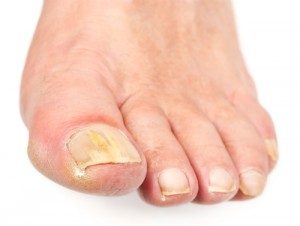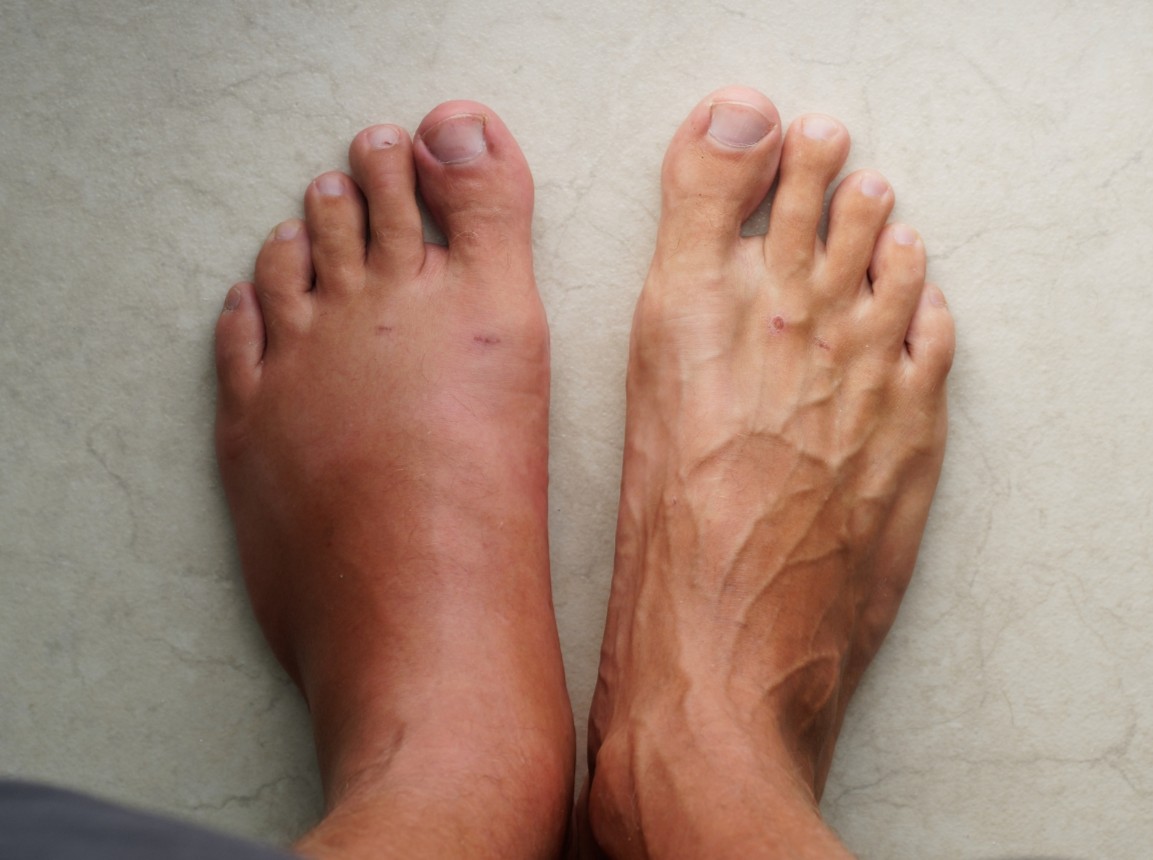A fungal nail infection, medically referred to as onychomycosis, describes the infiltration by one of many types of fungus into and around the toenail, causing a change in the appearance of the toenail. Up to 50% of abnormal changes to nail appearance are caused by fungus and around 10% of adults suffer from fungal nail infections.

Fungus, or fungi, are microscopic and so are invisible to the human eye – that is until they start infecting the nail and causing symptoms. Fungal nail infections are caused by a group of fungi called dermatophytes. They grow and survive by eating the keratin present in your nails. They also thrive in warm, moist environments and don’t require any sunlight to grow. This makes areas like feet that spend much time inside shoes and socks and walking around on damp surfaces an ideal breeding ground. It is important to note that while fungal spores may be present in an environment, that is not enough to definitely result in an infection.
Fungus spreads through spores that move through the air, as well as through direct contact. For an infection to occur, the fungus must come in contact with the nail and an infection must start, without the body’s immune response clearing the infection first. Certain conditions make people more susceptible to infection. These include:
Because fungus thrives in warm, moist, and dark environments, wearing closed in footwear, thick socks, and having sweaty feet creates the ideal environment for fungus to grow. It also means that places such as gyms, saunas, public pools, showers and nail salons also create an environment where the fungus can easily spread from foot to foot. Don’t worry – we take the risk out of fungal nail infections with our medical pedicures.
The symptoms you see are a result of the byproducts of the fungus eating away at the keratin in the nails. The nails can appear:
You may also develop whitish streaks or spots in the nail, and the nail may begin to come away from the nail bed. They may also cause an odour.

Various treatment methods currently exist for fungal nail infections. These include:
It is important to note that different treatments have shown different rates of success, and that not every treatment may be suitable for each person. For example, due to the risk of adverse effects, oral medications cannot be prescribed to those with impaired liver function. Your Podiatrist will be able to recommend the best treatment option for you and based on the extent of your infection. Often, treating a fungal infection means not only treating the infected nails but also disinfecting your environment (shoes, socks, showers, surfaces, all other non-infected nails) to reduce the risk of re-infection.

We’ve all had those days — you come home after hours on your feet, kick off your shoes, and notice your ankles look puffier than usual.
Swelling in the feet, ankles, or legs (known medically as edema) isn’t always a reason to panic. It can be as simple as a
salty lunch or a long flight.
But what if it’s happening more often — or seems to be getting worse? Swelling can sometimes be a sign of something more serious. Here’s
what could be going on and when to check in with your doctor.
.jpg)
Every year on October 8th, the world celebrates International Podiatry Day - a day dedicated to
raising awareness about foot health and the vital role that podiatrists play in our overall well-being.
Keeping your family on their feet and helping them to walk, run, play and exceed their goals is why we love getting up in the morning.
Ground Floor, One Health Building
122 Remuera Rd, Remuera
Auckland 1050, New Zealand
| MON - FRI | 7:30am – 6:30pm |
| SAT | 8:30am – 4:30pm |
| SUN | Some availability |
Make an Appointment
Online Schedule
Our virtual receptionist is available 24/7 to help with general questions, booking requests, and clinic information, even when our team is busy, or it's after hours.
Whether you're calling us or using our website, you'll get fast assistance any time of day. And if your query needs a personal touch, a member of our team will follow up as soon as possible.
If you’d like to see a podiatrist who speaks your preferred language, just give us a call and we’ll help you book.